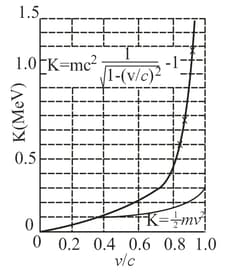rays of wavelength are directed in the positive direction of an -axis onto a target containing loosely bound electrons. For Compton scattering from one of those electrons, at an angle of , what are the Compton shift, the corresponding change in photon energy, the kinetic energy of the recoiling electron. and the angle between the positive direction of the -axis and the electron's direction of motion?

Important Questions on Photons and Matter Waves
Show that when a photon of energy is scattered from a free electron at rest, the maximum kinetic energy of the recoiling electron is given by .
Figure shows a case in which the momentum component of a particle is fixed, so that, then, from Heisenberg's uncertainty principle, the position of the particle is completely unknown. From the same principle, it follows that the opposite is also true, that is, if the position of a particle is exactly known the uncertainty in its momentum is infinite.
Consider an intermediate case. In which the position of a particle is measured, not to infinite precision, but to within a distance of where is the particle's de Broglie wavelength. Show that the uncertainty in the (simultaneously measured) momentum component is then equal to the component itself; that is, Under these circumstances, would a measured momentum of zero surprises you? What about a measured momentum of Of Of

